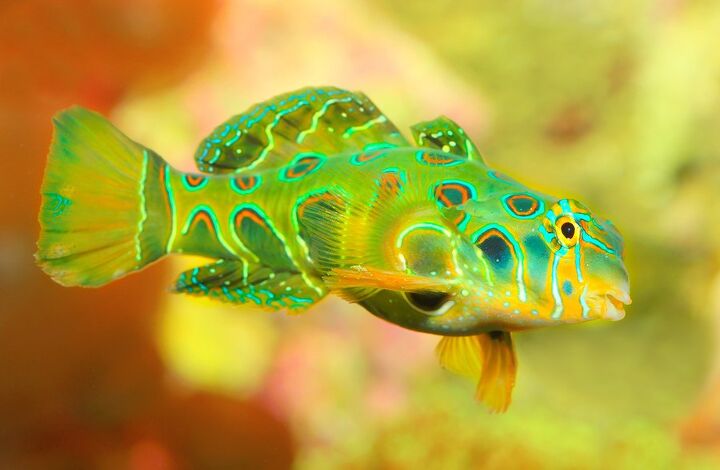Mandarinfish


About Mandarinfish
Sometimes referred to as dragonets or mandarinfish, mandarins are small, brightly colored saltwater fish belonging to the Synchiropus genus. Due to their small size, mandarins are a popular choice for nano reef tanks, though these tanks do require a certain degree of extra maintenance. In terms of temperament, the mandarin is not an aggressive species except with conspecifics and males of the same species. A single mandarin can be kept with other small, non-aggressive reef species without issue.
Sometimes referred to as dragonets or mandarinfish, mandarins are small, brightly colored saltwater fish belonging to the Synchiropus genus.
Mandarinfish are native to the Pacific Ocean and they are distributed in the area between the Ryuku Islands and Australia.
What sets mandarins apart from other fish is their bright colors and unique patterns. Some of the main colors you will see in mandarinfish include royal blue, bright yellow, neon green, and vibrant orange, as well as various shades of pink, purple, and red. Most mandarins have spots or wavy stripes of color covering their whole bodies.
Mandarins are small fish which makes them a great option for the reef tank. They only require a tank size around 30 gallons for a single fish or a pair and the tank should be decorated with corals and live rock as well as plenty of live sand. Mandarinfish also need plenty of hiding places which can be provided by rockwork. In terms of water conditions, mandarins prefer tropical temperatures in the 72°F to 82°F range with a slightly alkaline pH range between 8.1 and 8.4 is ideal with moderate hardness between 8 and 12 dKH.
What sets mandarins apart from other fish is their bright colors and unique patterns.
In the wild, mandarins follow a mixed diet of fish eggs, small worms, snails, and copepods. In the home aquarium, mandarins should be offered a varied diet of small fresh and frozen foods including brine shrimp, black worms, and other small worms. Mandarins will also eat small organisms off of live rock and live sand.
Also read: Tips and Tricks for Stocking a Community Tank
Mandarins have been known to spawn in the home aquarium and they can breed prolifically if you are able to establish a compatible breeding pair. Before breeding, it is essential that you condition the fish with high-quality foods and get them used to a regular lighting schedule since they usually spawn at night. Mandarins are pelagic spawners, releasing their eggs into the water column where they float freely until hatching.
The main species known as the mandarinfish or the Green Mandarin is Synchiropus splendidus. Other mandarin species include the following:
- Red Mandarin (Synchiropus cf. splendidus)
- Spotted Mandarin (Synchiropus picturatus)
Photo credit: GoodOlga/Bigstock; Kletr/Bigstock

Kate Barrington is the loving owner of two cats (Bagel and Munchkin) and a noisy herd of guinea pigs. Having grown up with golden retrievers, Kate has a great deal of experience with dogs but labels herself a lover of all pets. Having received a Bachelor's degree in English, Kate has combined her love for pets and her passion for writing to create her own freelance writing business, specializing in the pet niche.
More by Kate Barrington
























